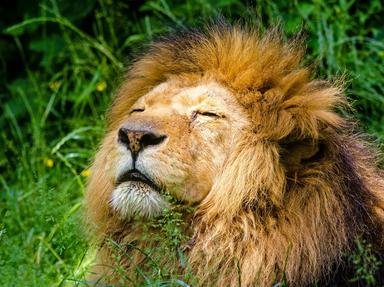Quiz Answer Key and Fun Facts
1. Eritrea is home to many cat species, including lions, leopards, and cheetahs. What is the name of this medium-sized cat, often mistaken for a kind of lynx, known for its ability to leap high in the air?
2. Despite its name, the aardwolf is not a wolf at all, but a kind of hyena. What characteristic - shared by mammals such as echidnas, pangolins, and aardvarks - does make it unique in its family?
3. A close relative of the manatee, the dugong is found in healthy populations in the Red Sea, off the coast of Eritrea. What does this distinctive marine mammal's diet mainly consist of?
4. Two of the five extant species of hyrax, the Cape hyrax (also known as dassie) and the bush hyrax, are common in Eritrea. Though these small mammals look like rodents, they are related to which much larger land animal, also found in Eritrea?
5. A denizen of the arid and semi-arid areas of the Horn of Africa, the African wild ass is believed to be the ancestor of the domestic donkey. What is its conservation status?
6. Eritrea is also home to a number of primate species, some of them endemic to the Horn of Africa. What kind of monkey is Papio hamadryas, held sacred by the ancient Egyptians?
7. Located in a strategic position on migratory routes, Eritrea hosts over 550 bird species. The one shown in the photo is a species of what wading bird, which had a major role in the religion of Ancient Egypt?
8. The world's largest bird, the common ostrich is found in most of Eritrea. However, a second species of this imposing bird, the Somali ostrich, is occasionally found in the regions bordering Ethiopia and Djibouti. What is a distinctive feature of this iconic animal?
9. This scary-looking, strikingly-coloured reptile is found in most of Eritrea, even in highland regions. What group of venomous snakes, associated with both India and Ancient Egypt, does it belong to?
10. A number of sea turtle species live and thrive in the warm waters of the Red Sea. Which one, named for a prominent facial feature, was once hunted as sources of valuable tortoiseshell, and is now critically endangered?
Source: Author
LadyNym
This quiz was reviewed by FunTrivia editor
gtho4 before going online.
Any errors found in FunTrivia content are routinely corrected through our feedback system.
